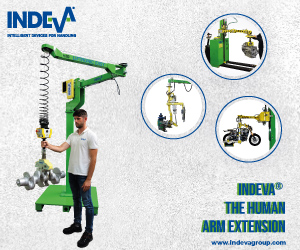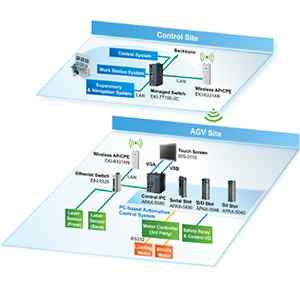Articles
Machine-to-Machine (M2M) communication advances Industrial Automation

With changing times, modern buildings and infrastructure have become more automated, organizations today rely on wireless machine-to-machine (M2M) communications. M2M technology allows private and public organizations to monitor and control telemetry systems, sensors, cameras, industrial equipment, and virtually any other system remotely and cost-effectively. As a result, organizations can more efficiently manage manufacturing facilities, and dozens of other remote and hard-to-reach systems.
Traditionally, M2M focused on industrial and enterprise applications. The present status of the M2M market and the core driver behind the boom is the ongoing advancement of wireless technologies. While early industrial M2M applications employed wired networks for localized automation, communications, and control, wireless technologies, and specifically cellular, have greatly expanded the possibilities for these products, taking them beyond the factory or industrial site.
Industrial and manufacturing companies face constant pressure to lower costs and improve speed and efficiency. As these companies seek to enhance productivity, they are using high end sophisticated manufacturing and supply chain automation applications. To reap the benefits of automation, however, they need to be able to gather more real-time data from the plant floor. Cellular technologies allow these companies to monitor and control equipment virtually anywhere, even in hard-to reach and temporary locations. They enable companies to operate supervisory control and data acquisition (SCADA) systems from anywhere in the facility or even remotely, and help drive down costs by integrating industrial equipment with security and environmental controls.
Cellular M2M solutions provide a means to integrate all environmental controls into one remotely controllable system, and to integrate with video surveillance and security systems. Ultimately, companies can secure multiple properties from anywhere, even as they improve power efficiency and reduce operating expenses.
Be it maintaining machines and plants installed across the globe from a central point, or a requirement to scan data from distant outstations and mobile applications, or controlling plant-wide processes - implementation of M2M solutions can reap benefits in terms of time and cost savings, operational efficiency gains and optimised performance from key remote plant or other assets.
There is a huge increase in the use of unmanned plants in the companies who rely upon keeping critical assets performing at their best. The benefits of this kind of technology are that it can deliver remote access to gather real-time process data, which becomes self-evident in the absence of skilled and costly personnel.
The benefit of enabling an engineer to remotely undertake diagnostic fault-finding via the Internet or mobile connection delivers substantial time and cost savings. Thus, the heart of M2M is the ability to quickly identify and rectify production line faults, or develop preventative maintenance strategies to tackle potential problems before they become expensive.
Teleservice an important part of M2M communication involves data exchange over the telephone line or via the Internet with distant technical systems, such as machines, plants or computers for error detection, diagnostics, maintenance, repair or machine optimisation. Teleservice offers an efficient, bespoke and resource-saving answer to diagnose distant systems, or to help plan and implement preventative maintenance.
Telecontrol another aspect of M2M communication involves the connection of distant process stations to one or more central control systems. Various public or private networks can be used for communication for monitoring and control.
For these diverse applications and businesses, cellular M2M connectivity can address many business and technical challenges, and enable important benefits. With M2M connectivity, organizations can gain real-time information about infrastructure, equipment, or any other system from virtually anywhere and remotely monitor, update, and control equipment used for environmental controls, manufacturing equipment for irrigation systems, and others.
|
Also Read : Comparing M2M Protocols: MQTT vs. CoAP in IoT Applications |
Statistics prove that implementing such a solution has reduced on-site service visits by up to 60%. For workers of plant spread across a wide, geographical area, or machine builders/OEMs trying to secure orders, being able to access remote locations to optimise performance, undertake real-time data analysis, carry out preventative maintenance, or simply keep plant running by minimising downtime are some of the critical benefits. M2M communication systems, which are modular, flexible and secure, are providing efficient remote access to machines and plants. They are also making a tangible contribution to cost and productivity effectiveness when managing remote industrial assets.
Additionally, M2M systems can be designed to withstand harsh environmental conditions and easily manage and control connected devices across the country or around the world. M2M systems provide flexibility to move equipment as needed, or bring up and tear down systems quickly for temporary or seasonal deployments. By using modern M2M management and application platforms, and taking care to choose platforms designed to meet real-world requirements, organizations can take full advantage of the M2M revolution.
Being all explained, it is essential to understand the everchanging needs of the M2M application that will be spread. The need for reliability and network period of time, widespread geographic cellular coverage, or a long lifespan will largely guide design considerations and deployment strategy. With knowledge of the available technologies M2M success is attainable and will go far to provide operational efficiencies and cost benefits for organizations of all sizes and in a wide range of industries.





